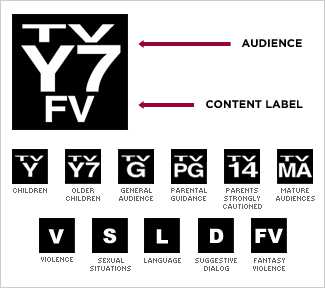TV vs Streaming Statistics: Exploring the Battle of Entertainment
Wondering whether traditional TV still reigns supreme or if streaming services have taken over? The answer might surprise you. In this article, we dive deep into the world of TV vs streaming statistics, dissecting the numbers and shedding light on the current state of entertainment consumption. From the rise of streaming giants to the loyal TV viewership, we’ll explore the trends, preferences, and habits that shape our entertainment choices. So if you’re curious about how TV and streaming fare against each other, stick around as we unravel the truth behind the numbers.
TV vs Streaming Statistics
Television and streaming services have revolutionized the way we consume entertainment. Gone are the days when we had to wait for our favorite shows to air at a specific time. With the rise of streaming platforms like Netflix, Hulu, and Amazon Prime Video, we can now watch our favorite content whenever and wherever we want. But how do television and streaming services compare in terms of viewership, popularity, and user preferences? In this article, we delve into the world of TV and streaming statistics to shed light on this topic.
1. The Shift from Traditional TV to Streaming
The digital era has witnessed a significant shift in viewers’ preferences from traditional TV to streaming services. Let’s explore some key statistics that highlight this shift:
- According to a survey conducted by Deloitte, 69% of US consumers now subscribe to at least one streaming service.
- In 2020, streaming services accounted for over 25% of all TV viewing in the United States, a steady increase from previous years.
- Streaming service subscribers spend an average of 3.7 hours per day watching online content, according to a report by Conviva.
These statistics show that streaming services have become a dominant force in the entertainment industry and are rapidly gaining popularity among viewers.
2. User Preferences and Consumption Habits
Understanding user preferences and consumption habits is crucial in determining the success and growth of TV and streaming services. Let’s dive into some statistics that shed light on these aspects:
2.1 Preferred Devices for Streaming
With the availability of various devices for streaming, it’s interesting to explore user preferences:
- Approximately 70% of Netflix viewing occurs on television sets, according to the company’s Q1 2021 report.
- Mobile phones account for around 10% of Netflix viewing, while tablets make up around 6% of the total.
- Smart TVs are gaining popularity, with 33 million connected TV devices sold in the United States in 2020.
These statistics indicate that while television sets remain the preferred choice for streaming content, mobile devices and smart TVs are also significant contributors to the streaming landscape.
2.2 Binge-Watching Trends
Binge-watching has become a common phenomenon in the age of streaming, allowing viewers to consume multiple episodes or an entire season of a show in one sitting. Let’s explore some interesting binge-watching statistics:
- According to a study by Netflix, 61% of respondents binge-watch shows regularly.
- The most popular binge-watching genres include drama, comedy, and reality TV.
- The average binge-watching session lasts for about 2 hours and 40 minutes, as reported by Nielsen.
These statistics highlight the growing trend of binge-watching and the importance of providing captivating, binge-worthy content to attract and retain viewers.
3. TV vs Streaming Advertising
Advertising plays a crucial role in the revenue generation of both traditional TV and streaming services. Let’s explore some statistics related to advertising on TV and streaming platforms:
3.1 Traditional TV Advertising
Television advertising continues to be a significant revenue source for broadcasters. Consider the following statistics:
- TV advertising spending in the United States amounted to $60 billion in 2020, according to Statista.
- Super Bowl commercials, dubbed the pinnacle of TV advertising, cost approximately $5.5 million for a 30-second spot in 2021.
- Over-the-air TV broadcasters generated $17.7 billion in advertising revenue in 2020, as reported by Standard Media Index.
These statistics indicate that despite the rise of streaming services, traditional TV advertising still commands substantial investment from advertisers.
3.2 Streaming Advertising
Streaming services have also embraced advertising as a revenue stream. Let’s explore some relevant statistics:
- Streaming platforms generated $28.1 billion in advertising revenue globally in 2020, according to Magna.
- According to eMarketer, ad-supported streaming services are expected to reach 55.1 million US households by 2022.
- Connected TV (CTV) ad spending is projected to reach $11.4 billion in the United States by 2021.
These statistics suggest that the advertising landscape is evolving, with streaming platforms becoming an attractive option for advertisers seeking to reach targeted audiences.
4. Global Streaming and TV Statistics
Streaming and TV viewership vary across countries and regions. Let’s explore some global statistics to understand the geographic trends:
4.1 Streaming Services’ Global Reach
Streaming services have expanded their global footprint, capturing audiences around the world. Consider the following statistics:
- Netflix has a presence in over 190 countries and has more than 209 million paid subscribers worldwide.
- Disney+ reached a milestone of over 100 million subscribers in just 16 months after its launch.
- Amazon Prime Video has an estimated 175 million worldwide subscribers, as reported by Statista.
These statistics demonstrate the global popularity and widespread adoption of streaming services.
4.2 Popular TV Channels Globally
When it comes to traditional TV, certain channels have a strong presence and viewership worldwide. Let’s explore some noteworthy global TV channel statistics:
- China Central Television (CCTV) is the world’s most-watched television network, with an estimated daily audience of over 1 billion.
- HBO, known for its premium content and critically acclaimed shows, has a global subscriber base of around 140 million.
- The British Broadcasting Corporation (BBC) reaches 351 million households globally, catering to diverse audiences.
These statistics illustrate the significance of traditional TV channels and their global viewership.
In conclusion, the statistics above provide valuable insights into the world of TV and streaming. They highlight the shift in viewers’ preferences, user consumption habits, advertising trends, and the global reach of streaming services. As the streaming landscape continues to evolve, it’s essential for industry players to stay informed and adapt to changing viewer behaviors and demands.
Streaming Viewership Surpasses Cable TV For First Time
Frequently Asked Questions
What is the difference between TV and streaming?
TV refers to traditional television broadcasting, where programs are aired on specific channels with set schedules. Streaming, on the other hand, allows viewers to watch content over the internet on various devices, giving them the flexibility to choose what, when, and where they want to watch.
How popular is streaming compared to TV?
Streaming has seen a significant rise in popularity in recent years. According to statistics, the number of streaming subscribers has been steadily increasing, surpassing the number of cable and satellite TV subscribers. This shift is largely driven by the convenience and accessibility offered by streaming services.
Are people cutting the cord and switching to streaming?
Yes, many people are choosing to “cut the cord” and rely solely on streaming services for their entertainment needs. This trend is fueled by factors such as cost savings, customization options, and the ability to access a wide range of content from various providers.
What are the advantages of streaming over TV?
Streaming offers several advantages over traditional TV. Firstly, it provides on-demand access to a vast library of content, allowing viewers to watch their favorite shows and movies whenever they want. Additionally, streaming services often offer personalized recommendations based on user preferences, creating a more tailored viewing experience.
Are there any drawbacks to streaming?
While streaming has many benefits, there are some drawbacks to consider. One common concern is the need for a stable internet connection, as streaming requires a reliable and fast connection to ensure smooth playback. Some viewers may also miss the experience of live TV, such as watching sports events or news broadcasts in real-time.
Can I still watch live TV through streaming services?
Yes, many streaming services now offer live TV options, allowing viewers to watch their favorite channels and programs in real-time. These services often include features such as DVR capabilities, which enable users to record live shows for later viewing.
Final Thoughts
In today’s digital age, the battle between TV and streaming services is more intense than ever. When analyzing the TV vs streaming statistics, it becomes clear that streaming has gained significant momentum. With the convenience of on-demand content, affordable subscription plans, and a wide range of choices, viewers are flocking to streaming platforms. The rise in streaming viewership has led to a decline in traditional TV viewership, as people embrace the freedom to watch what they want, when they want. As a result, TV networks must adapt and find innovative ways to stay relevant in the era of streaming dominance.
I’m passionate about hardware, especially laptops, monitors, and home office gear. I share reviews and practical advice to help readers choose the right devices and get the best performance.






